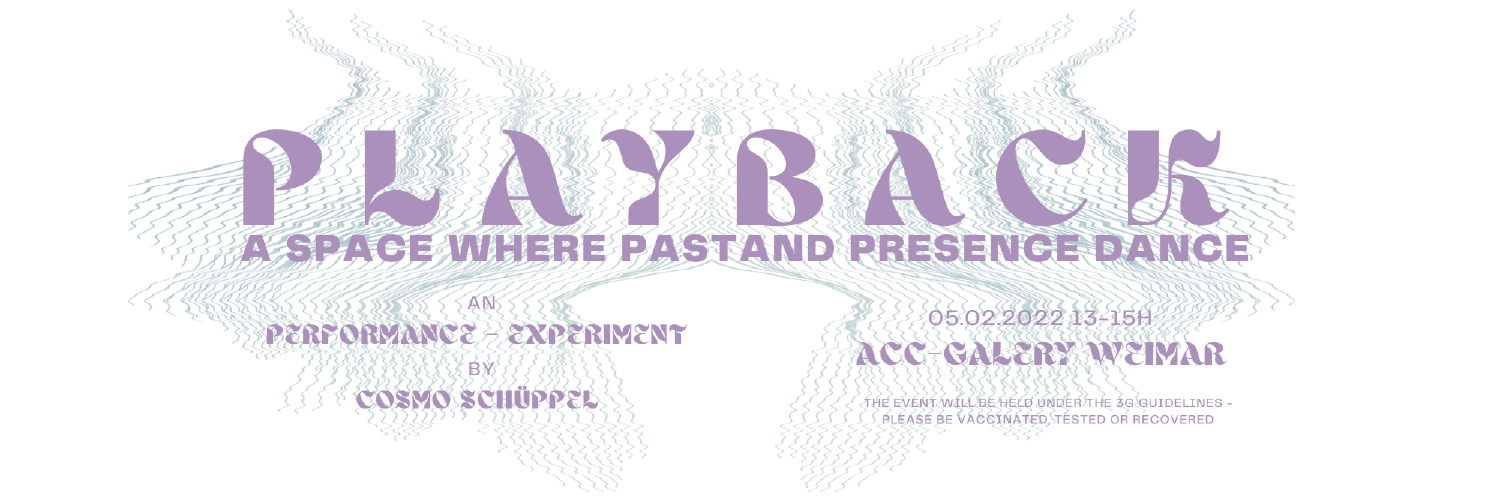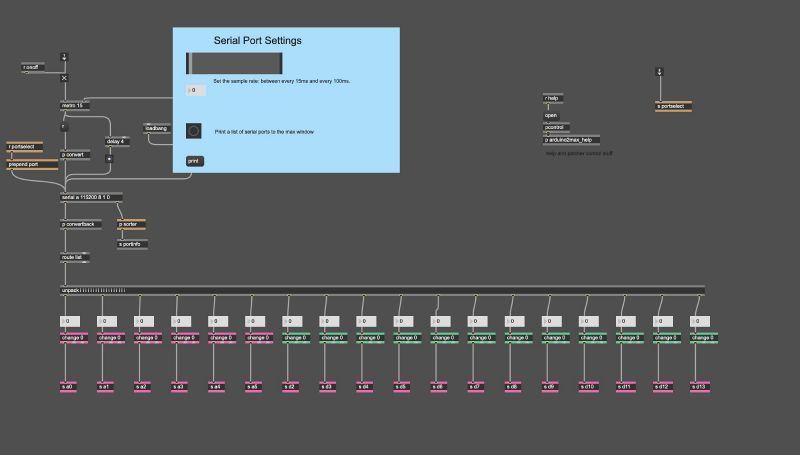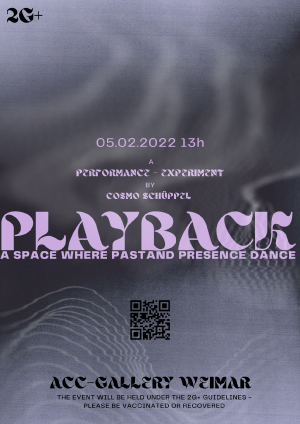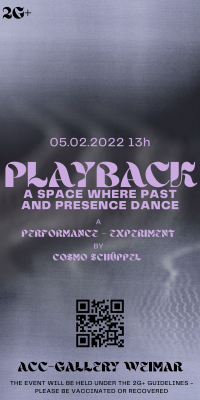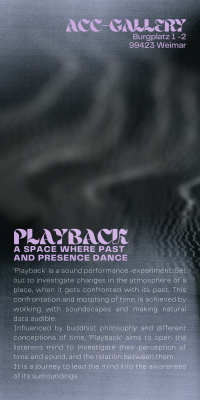PLAYBACK - A Place Where Past And Presence Dance
Speculative Atmospheres ll
Project research
Cosmo Schüppel
‘Playback’ is a sound performance/experiment. It investigates changes in the atmosphere of a place, when it gets confronted with its past. Influenced by buddhist philosophy and different conceptions of time, ‘Playback’ aims to open the listeners mind to investigate their perception of sound and time; and the relation between both. Furthermore it is a journey to lead the mind into the awareness of its surroundings.
Recording of the final exhibition at ACC-Galerie Weimar. The performance happened within the framework of the Winterwerkschau 2022. https://https://soundcloud.com/nik-cosmo/playbackexhrec/s-9tXqVBjcoPp
In ‘Playback’ a designated place is chosen where the data of natural factors (air quality, temperature, decibel) is collected and its soundscape (the atmospheric sounds) is recorded. The data is made audible in a piece of atmospheric drone-music; here the data of the natural factors determine the aspects of the created sound. This monotonic drone is mixed with the recorded soundscape and is played back to/at the place at a later time. At this later playback-event, the data is collected again and is transcribed into music - live. The participator then can witness the two data-drones (the one from collected and the one from live transcribed natural factors) and the two soundscapes (the pre-recorded one and the one that the place naturally emits) which morph into each other.
Conceptually this project talks about the influence of the past on the perceived presence of the present moment and what happens if past and present are not clearly distinguishable. Through this, ‘Playback’ questions the accustomed view and perception of time as a linear and absolute concept. In this conceptual dissolving of the perception of time the installation leads the participator into a meditative state where past and present morph into each other. This can happen naturally when the mind drifts into a state of trance, for example by perceiving monotonic sounds. The world of thought is brought into the foreground of perception and the mind is confronted with its own more or less hectic patterns. The participant's thoughts and emotional patterns, created in the past, are now confronted by being held in the present moment. Just like that the space is confronted with its own past. Through this process the participant becomes aware of the interplay of esoteric and exoteric sounds, their different perceptions of time, as well as their relationship of their physical body and the surrounding space.
Technically this is achieved by creating sounds out of the data of Arduino sensors through MaxMSP.
The atmospheric-soundscape is recorded with a ‘normal’ microphone.
The playback-event would need quite a loud stereo sound system, so that the mixture of past- and present-soundscape can be achieved in a convincing manner.
Mood Trailer
concept and audio as of mid January
Sound
Because I am still working on the texture of the generated drone-sound. Here is an updated list of it's most recent condition:
19.01.2022
Final Audio: https://soundcloud.com/nik-cosmo/playbackaudiotest4-190122/s-B2LKQr2AxV0
15.01.2022
audioTest3: https://soundcloud.com/nik-cosmo/playbackaudiotest3-15012022/s-Q0p4guqoSJv
12.01.2022
audioTest2: https://soundcloud.com/nik-cosmo/playbackaudiotest-2201122/s-QIKZ0m2DYDy (...there is some clipping that is not on purpose...)
audioTest1: https://soundcloud.com/nik-cosmo/playbackaudiotest-220112/s-5UFmo34Evb9
arduino code :
to read-out the sensor data and to make it available for Max
// a place to hold pin values int x = 0;
void setup()
{
Serial.begin(115200);
delay(600);
digitalWrite(13,LOW);
pinMode(13,INPUT);
}
// Check serial buffer for characters
// If an 'r' is received then read the pins
// Read and send analog pins 0-5
void loop()
{
if (Serial.available() > 0){
if (Serial.read() == 'r') {
for (int pin= 0; pin<=5; pin++){
x = analogRead(pin);
sendValue (x);
}
// Read and send digital pins 2-13
// Send a carriage returnt to mark end of pin data.
// add a delay to prevent crashing/overloading of the serial port
for (int pin= 2; pin<=13; pin++){
x = digitalRead(pin);
sendValue (x);
}
Serial.println();
delay (5);
}
}
}
// function to send the pin value followed by a "space".
void sendValue (int x){
Serial.print(x);
Serial.write(32);
}
Max msp (Max for Live) patch:
the sound that is created in Max is a sensor-data controlled sine-oscillator. This simple sine wave is them modified in Ableton Live, to what can be heard in the video example. For that I used different filters, modifications of the frequency spectrum, spaces and other aesthetical effects. Besides that the data-osc. is tripples (in both the 'past' and the 'present' - so in the final listening experience you heard six at the same time). One osc. stays at the original pitch - laying flat and fat in the mid range frequencies, depending on the data that it is given by the arduino. The other two are focused on the highs and lows, to give me more control over the modification of the sound and to give both more if the clearness.
